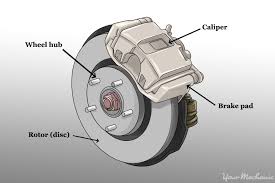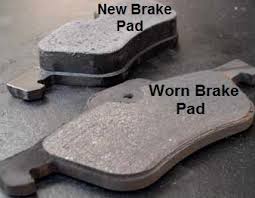Understanding Your Brakes
Page Contents
The Brakes on your Car are often taken for granted but they are the biggest safety component on your vehicle.
Without them you would be unable to stop your vehicle resulting in collisions with other vehicles, pedestrians and cyclists. The importance of an effective braking system cannot be underestimated.
To help you get the most out of your brakes and ensure they function the way they are intended, keep reading:
Brake pads and how they work?
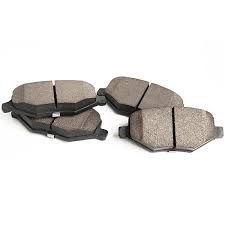
A typical vehicle braking system consists of a disc, a caliper and a pair of pads for each wheel. The pads are fitted in the caliper with their friction material almost touching the two sides of the disc.
When the brake pedal is pressed, hydraulic fluid in the caliper pushes each pad against each side of the rotating disc. This results in friction being produced, which slows down and stops the vehicle.
When you think of the number of times this action takes place on a daily, weekly, monthly and annual basis – it’s no surprise that the pads & discs suffer wear and tear and need replacing regularly.
How long do brake pads last?
There is no set rule for this. Various factors can all have an impact such as motorway driving against city driving.. A set of pads can last from anywhere between 25,000 and 60,000 miles – possibly more. Rear pads will also last a lot longer than front pads. On an average car 65% of the braking is pressure is applied by the front brakes and 35% rear.
What factors can affect how long your brake pads last?
It’s worth taking into account the following factors to give you an idea of how long your pads might last.
Where do you drive?
If you do a lot of your driving on the motorway you may find that your pads last longer than if you do more driving around inner cities and on shorter journeys.
The reason? You’re more likely to be stopping and starting – at traffic lights, roundabouts and junctions. Therefore working the brakes more often than if you were cruising along on a motorway and using them less.
How much weight are you carrying?
Another factor in pad wear is the weight being carried by the vehicle, for example 4 or 5 passengers, fully loaded boot, towing a caravan etc. When the vehicle is lighter it is easier to slow down and stop with less braking effort required.
Types of brake pads
Non-Asbestos Organic
Fibres, high-temperature resins, and filler materials are used in the making of this brake pad type. If compared to the semi-metallic type, they are softer and create less noise; but deteriorate faster and create more dust. These types of brake pads are sometimes listed as organic or NAO.
Low-Metallic NAO
These pads are made of organic materials with 10%-30% metal such as steel or copper in the mix. Though they create more noise and brake dust, their braking and heat transfer capabilities are excellent.
Semi-Metallic
With long-term durability and excellent heat transfer capability, semi-metallic is the most common pad type used widely in different vehicles. It is made of steel wire or wool, graphite or copper, and friction modifiers.
These pads contains nearly 30%-65% metal, but create more noise, wear down Discs faster, and under performs at low temperatures.
Ceramic
You can find a small amount of metal in this pad type, but they are mainly made of ceramic fibres, bonding agents, and nonferrous filler materials.
They create less noise, wear down slowly in comparison to other brake pad types, and create less dust. Their only downside is they are pricier than other pads.
How many miles do you do?
The more miles you do, the more you use your brakes and the faster your pads & discs wear out, it’s as simple as that.
Usually, front pads will wear out faster than those at the rear because the front handles more of the braking load.
How can I tell my brake pads need replacing?
Never ignore pads that need replacing. Most vehicles are fitted with wear sensors to detect when front or rear pads are getting critically low. However, there are other signs to look out for too.
Warning signs to change your brake pads

Warning light
The most obvious indication is typically, a pad wear warning light will show on the car’s display board, indicating that at least one set of pads is almost worn out and require replacing. However, not all cars are equipped with pad sensors.
If your car doesn’t have sensors, you must make sure the pads are inspected and checked regularly. The Auto Care Group offer free brake checks but also carry out brake inspections as part of our car servicing programmes.
Services will assess the condition of the pads but at other times, listen and look for possible flaws including:
Squeaking Noise
Squeaking brakes is a common problem that is very common on most cars. There are many reason for this such as pads stuck in the slides and not freeing off properly when you release the brake pedal causing the pad to rub the disc slightly. Also cheap brake pads are often known to cause squeaking issues. It is always best to get even a squeak checked out as it may be the start of something more serious.
A loud screeching
Loud screeching sound when braking is a real warning sign that new pads could be needed, or at least require inspecting. Some manufacturers design their pads so that there is a metal clip that touches the brakes discs as the pad wears out and the screeching noise could be warning that your pads are almost worn down to the metal backing. This method stops the pads from going fully down to the metal and scoring your brake discs and becoming dangerous.
If you hear a grinding noise, it’s likely the pads have been worn down completely. If this happens you should not drive the vehicle and arrange for the brakes to be checked and replaced as soon as possible.
Visual check
It’s sometimes possible to look at the pads for wear. Depending on the wheels fitted to you vehicle, you may be able to see the outer pad by looking through the spokes of the wheel – the outer pad will be pressed against the brake disc.
If you are unsure it is always worth getting the inspected
Pulling to one side
While braking, if the vehicle feels as if it pulls to one side or the other, then you must get this checked out. Uneven pad wear will be caused by an imbalance in the braking efficiency, which needs to be checked and rectified. The most common reasons for this are seized calipers or the pads could be seized in the caliper slides.
Bad vibrations
If the brake pedal, the vehicle or the steering wheel vibrates when you push your foot down on it, the pads could be warped due to excessive heat build up, there is also usually excessive wear or damage to the disc.
How to make brake pads last longer
There are ways of making pads last longer:
Being aware of traffic ahead, and anticipating potential braking situations, helps a driver to apply the brakes steadily and gradually instead of suddenly slamming them on.
Avoid high speed driving that results in needing to brake heavily and quickly – sudden braking puts brake pads under extra pressure.
Rapid acceleration and frantic braking increases the wear and tear to pads & discs so driving responsibly can help to lessen any damage and contribute to a longer life span.
Avoid carrying unnecessary weight in the vehicle if it can be avoided
Should I Change my Brake Discs at the same time?
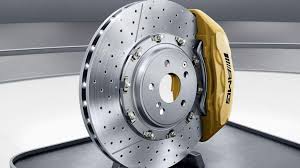
As with pads, life expectancy of discs will differ from vehicle to vehicle again depending on driving style and conditions.
Since the removal of Asbestos from pads the materials used in the manufacture of pads have become harder. As we saw above in the different types of pads available a lot of them now contain other metals. As a result the life expectancy of discs has reduced greatly.
Brake Disc Thickness
All our supplied discs are manufactured in line with the original disc parameters set out to strict regulations as defined by the vehicle manufacturer. The Minimum Thickness of a Disc is determined by the vehicle manufacturers when the car is designed. At the design stage, the minimum thickness for when a disc no longer performs fully and must be changed is defined.
Manufacturers take several things into account before the final product is engineered, for example the heat dissipation and the relationship with the caliper and brake pad retention. When a disc begins to wear and gets thinner, the heat dissipation properties are reduced. If a worn disc is matched with worn out pads, the caliper has the potential to over extend which could lead to locking or dragging, in turn building up more heat in the system which could cause problems with evaporated brake fluid and in the worst case brake failure.
Minimum thickness on discs is crucial to the safety of the brake system. Without a safe brake system, you could render all other safety precautions useless and put lives at risk.
What Can Happen If My Brake Discs are Below Minimum Thickness
Here are some side-effects of lower than the advised minimum thickness levels for discs:
1- Steering wheel wobble
2- Brake fade
3- Longer brake pedal travel
4- Brake disc anneals (which is not allowing the disc to cool slowly, in order to remove internal stresses and toughen it.)
5- Transformation of the structure of the disc 6- The friction ring breaking off
It is much easier to see when a pad is worn and needs replacing than a disc. This is because there are different guidelines for minimum thickness for each vehicle manufacturer and for each vehicle application. You should never allow the discs to be worn thinner than the manufacturers’ guidelines as it will not perform as it should and in extreme circumstances you could lose your brakes altogether.
MOT test & Brakes
It is a common misconception that if a vehicle passes an MOT test it is taken as a sign that the vehicle including its brakes have been given a clean bill of health. The MOT test does not remove your road wheels. Disc thickness cannot be measured to check if it falls below the manufacturers minimum settings. Unless the tester can see that the pad thickness is below 3mm he cannot fail the vehicle. More often than not you cannot see the pads to be able to make a judgement. It is a series of basic checks to see if the braking efficiencies are enough to warrant a pass but no thorough inspection takes place.
Brake Fluid
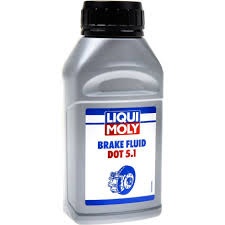
Brake Fluid should be changed at least every two years as advised by the vehicle manufacturer. The fluid has hygroscopic properties – meaning that it absorbs moisture during its life in your car through the pipes, hoses and joints that it lubricates. The fluid is subjected to extreme temperatures during heavy braking and as it gets older and absorbs more water its boiling point is reduced. It can result in brake fade or complete failure once its boiling point is significantly reduced.
The Auto Care Group
The Auto Care Group carry out free brake checks at our sites in Darlington & Stockton. We also offer to beat any price on like for like products. In addition we also offer Tyres at the lowest prices guaranteed, Servicing, Repairs, MOT Testing & Air Conditioning, Clutches & Exhausts.
Brakes in Darlington @ Darlington Tyre & Auto Care 01325 488855
Brakes in Stockton @ Teesdale Tyre & Auto Care 01642 676667







